707hp means war, and we talk to the General in charge.
It all started with a rather innocuous conversation between then-head of Chrysler's Street and Racing Technology division, Ralph Gilles, and Hellcat Chief Engineer Chris Cowland.
"Ralph came to the powertrain group and asked if we could beat a couple of competitors who had recently issued big supercharged muscle cars and sports cars," Cowland recalls. "Our maximum V8 at the time produced 470hp (350kW). Ralph wanted to produce a car that could beat them."
Cowland's powertrain crew at FCA (Fiat Chrysler Automobiles) looked into turbocharging and supercharging and also formulated several requirements. The end package had to exude American muscle-car DNA, especially the soundtrack. Working behind the scenes in a relatively short period, they set specific overarching performance goals. They needed to create a fat, early-onset torque curve and instant transient response. They also wanted to ensure the pressure-charged engine had great reflexes—a character in which many highly-boosted engines fall short. They quickly decided turbocharging would create too much muffling effect with disappointing noise quality and would also commit the cardinal sin of laggy throttle response.
"We had 11 executives at one point to do final evaluations," recalls Cowland. "We asked them if they wanted more or less supercharger noise. The votes were ten-to-one in favor of more. Everyone wanted a distinct sound identity for the Hellcat, unique from the normally aspirated 6.4L V8 engines."
In musical terms, the Hellcat barks equal parts exhaust (in the bass and baritone range), induction (tenor, alto), all topped off by a prominent soprano supercharger in the highest register of the Hellcat score. It's got the subtlety of Andrew Dice Clay, it's always triple forte with the windows down, and it reminds you that there are indeed semi-controlled explosions taking place behind those cylinder walls. Tchaikovsky's 1812 Overture (with live cannon fire) backing up The Sex Pistols. Job done.
The Hellcat engine is based on the 6.4-liter "Apache" V8 from the Challenger, Charger and Jeep Grand Cherokee, but retaining only 9 percent of the engine components, as measured by their cost. The Hellcat uses new pistons, piston pins, connecting rods, a new heat-treated forged crankshaft and a specific aluminum alloy for the cylinder head castings that increase conductivity.
The Hellcat's power bogey was 600hp (447kW) and that remained in place until late in the development game. Then came the Shelby GT500 in 2013 with a claimed 662hp (493kW). This changed things and became Cowland's "Who Moved My Cheese?" moment. Luckily, the Hellcat crew had already green-lit the largest-capacity supercharger they could test. Therefore, reaching a new 700hp (521kW) goal would be within the bandwidth of the engine package's breathing (final boost pressure is just over 11psi, or 0.8bar).
Jim Resnick
When you first get into the Hellcat it defaults to 500hp. We're not entirely sure that "Eco" is the right label for that mode.Interestingly, this IHI-sourced supercharger has a one-way clutch on the pulley itself, but only to prevent overrunning on a closed throttle. At 6,000rpm engine speed, the slower of the two meshing rotors is turning at 14,000rpm while the fast one is doing 23,000rpm. On a closed throttle, they kinda want to keep spinning. That would continue to charge the intake, driving the engine even though the throttle is closed—the clutch averts that. More power means more heat (just ask a Veyron engineer), so the biggest threshold for engineering the Hellcat engine was the cooling system, of which it actually has two. One cools the block, heads, and the other traditional bits; there's an additional one of abnormal substance to cool the intake charge. And the latter was prompted by gaining an advantage over competitors.
"After benchmarking the chief competitors," Cowland says, "we found they don't run well after the first lap on a circuit. They start heat soaking. Our twin-cooling system uses a high-temperature circuit [194˚F/90˚ C] for the block, heads and traditional bits, and then the low-temp circuit [104˚ F; 40˚ C] runs the charge air coolers for the supercharger. We wanted the stock car to last 20 laps around a circuit without heat-soak degradation in performance. We also found a way to expel heat from underneath and achieved aerodynamic stability at 200mph—goals that are really opposing, but we managed it."
While that ability to survive a road course for 20 laps is one thing, the drag-strip bogey was something else. Cowland and his merry band decided the Hellcat must do 50 quarter-mile runs at max performance elapsed times with the standard tires, then immediately do 50 more with slick drag tires. No degradation, no heat soak, and no component failures allowed.
The transmission itself is upgraded internally and carries a max capacity of 664 ft-lb (900Nm) from the version used in non-supercharged V8s of 516 ft-lb (700 Nm). The diameter of the ring gear inside the differential is increased, as are the half-shafts and the whole driveshaft. The shock loads during launch are hefty: 10,000Nm of shock torque during a launch with slicks became the design guideline.
Driving it, though, you never think about engineering challenges. You do think about traction challenges because at anything greater than a quarter throttle—even when you've got the selective power dialed back to a mere 500hp—there's nowhere near enough of it. Which begets one other nugget: This car would be undrivable to all but the most restrained drivers without the electronic safeguards. And don't ask about fuel economy. It's rated at 13mpg city and 22mpg highway. We struggled with those numbers.
The Challenger itself is large and can transport normal-sized humans in the back seat to a degree the Mustang and Camaro can only dream about. And the trunk is comparatively enormous. The Challenger does a very reasonable job on sinewy roads where outright sports cars shine, astonishing given its 4,449lb curb weight. The standard three-mode Bilstein shocks help create a reasonably plush ride despite the car's main mission, but dial up Full Hard and it downright invents extra high-amplitude bumps in the road. It also corners flatly through very quick steering, even if any of the communication between front tires and road surface is coated in Novocain. Equipped with vented Brembo front brakes that break some sort of size record at 15.4 inches in diameter and clamped by six-piston calipers, the Hellcat stops almost as well as it goes.
But the main mission is acceleration and that mission is not just accomplished, it's run over mid-track at about 105 decibels. Competitive numbers put the Challenger Hellcat at 3.6 seconds to 60mph and through the quarter-mile in just 11.7 seconds at 126mph. Go full drag and swap on "cheater slicks" (drag tires that are also street legal) and you'll see that 11.7 drop to about 11.2 seconds. But even that misses the point.
Here's the point: wheel spin at 90mph. Even when cruising at extra-legal speeds, safeguards disabled (on a closed test track, naturally), stab the throttle with abandon and you get wheel spin, you get sideways, you create skidmarks on the outside and on the inside, if you get my drift.
This car is perfect.

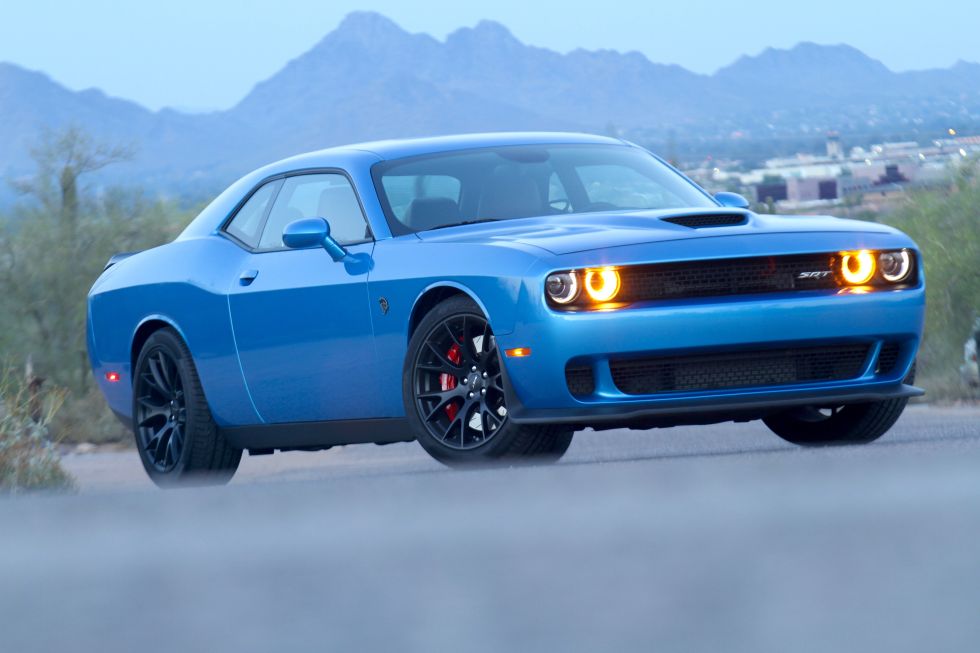
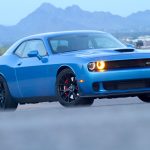
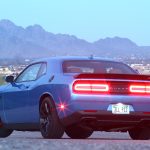
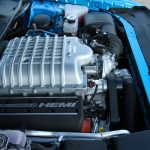

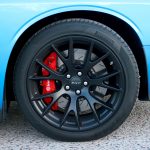
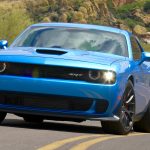
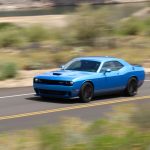
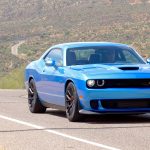
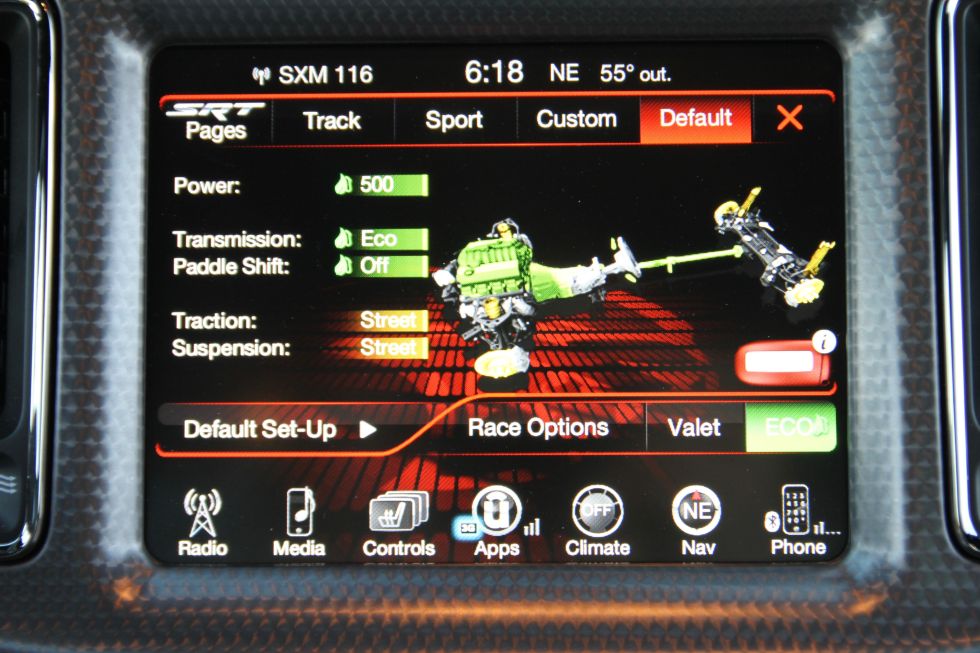
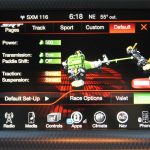
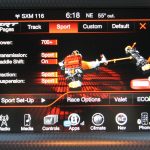
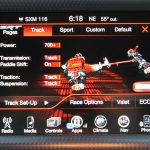
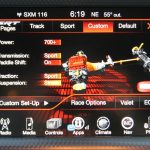
Post a Comment